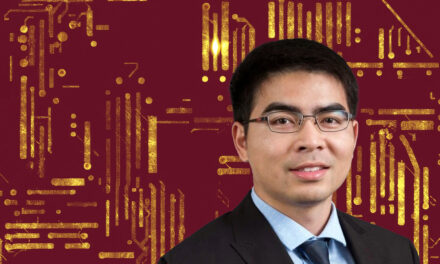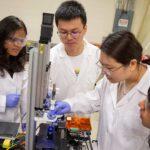
The School for Engineering of Matter, Transport and Energy welcomes its new faculty members
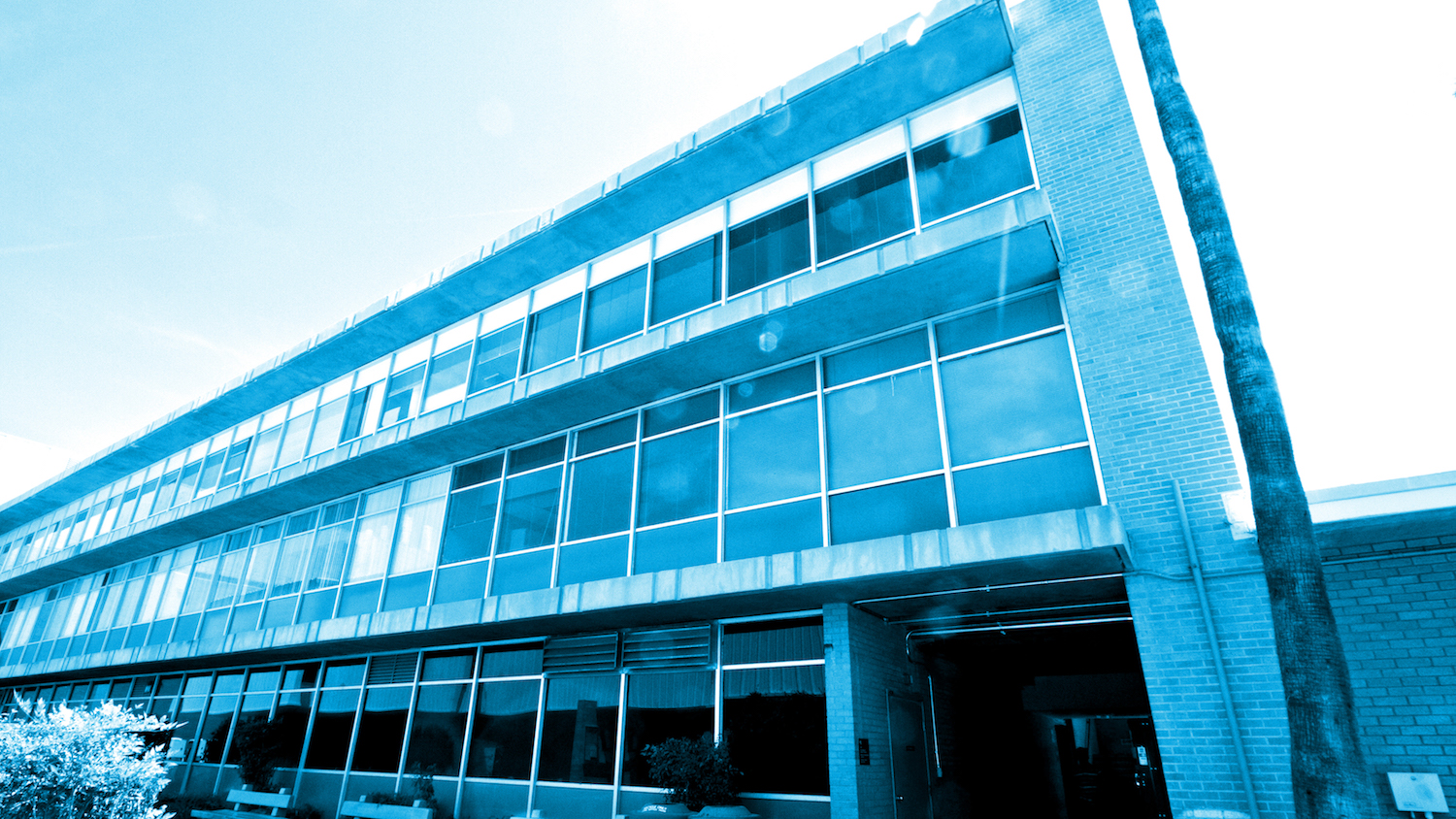

Alexandra Navrotsky - Professor
Alexandra Navrotsky is returning to Arizona State University to lead the development of the Center for Materials of the Universe. Navrotsky previously served on the ASU faculty in chemistry from 1969 through 1985.
In addition to serving as director of the new center, Navrotsky will hold joint appointments in the School of Molecular Sciences in The College of Liberal Arts and Sciences and the School for Engineering for Engineering of Matter, Transport and Energy in the Ira A. Fulton Schools of Engineering.
“The fabulous opportunity to build the Center for Materials of the Universe and to work on my own research is what brought me back to ASU,” says Navrotsky.
Through the center, Navrotsky will connect scientists and engineers to form a multidisciplinary research team. The goal is to make discoveries that will inform the materials science community of new materials and technologies, inspired by substances that exist in extreme conditions beyond Earth.
As understandings of properties of materials relevant to both aerospace and planetary science advance, it could expand reseachers’ current view of the universe.
“It’s a rapidly growing area in which I can make unique contributions,” says Navrotsky.
The accomplished researcher can trace her interest in science back an early age, taking after her grandfather who was a civil engineer.
“I found materials fascinating and seemed to have an affinity for thermodynamics,” she says.
What began as a budding interest has evolved and led Navrotsky to a rewarding career. Following her first experience at ASU, she spent 12 years on the faculty at Princeton University from 1985 to 1997, and then at the University of California, Davis, where she remained until returning to Tempe this year.
Navrotsky has amassed a long and impressive list of achievements throughout her career, including being elected to the U.S. National Academy of Sciences in 1993. Recently, a newly discovered mineral K2Na10(UO2)3(SO4)9·2H2O was named Navrotskyite in her honor.
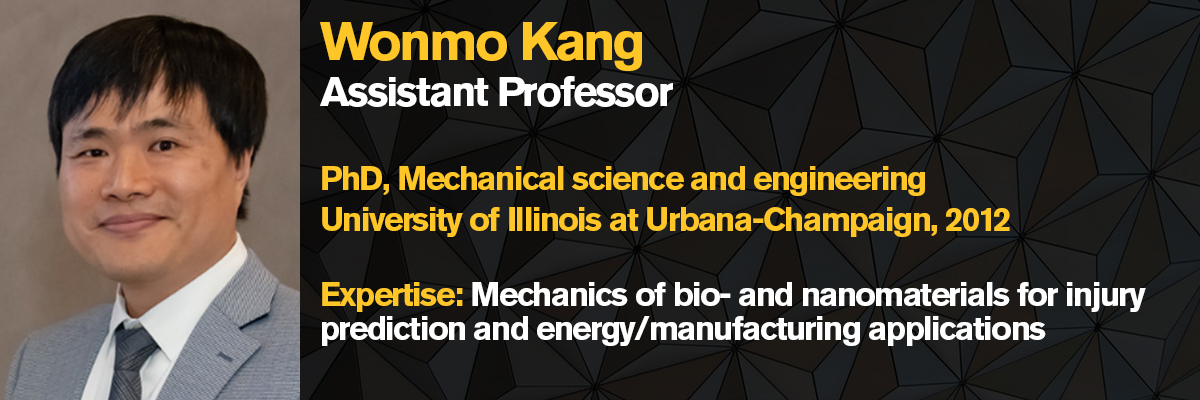
Wonmo Kang - Assistant Professor
Wonmo Kang will join the faculty of the School for Engineering of Matter, Transport and Energy in January 2020, after spending the past four years as a research scientist at the U.S. Naval Research Laboratory.
There, Kang is leveraging his scientific expertise in materials characterization and mechanics of materials, including biomaterials, to deliver cutting-edge technology and new knowledge to the U.S. Navy and Marine Corps.
Kang’s research focus varies widely – ranging from monitoring and detecting brain injuries to developing nanocarbon materials-based composite structures. These new materials could result in yarns that are 10 times stronger, but as light as state-of-the-art carbon fibers to create lightweight soft armor and high-performance composites.
Kang has always been fascinated by engineering problems that have real-world relevance. He is looking forward bringing those practical applications to his research and teaching in the Ira A. Fulton Schools of Engineering.
“ASU impressed me in many ways, including the world-renowned faculty members, a diverse student body and excellent facilities with state-of-the-art instruments,” says Kang. “[But] what struck me the most was the openness between different disciplines. I believe this openness is the key to fostering fruitful multidisciplinary collaborations, as well as providing students with unique opportunities to gain invaluable interdisciplinary experience.”
Kang realizes many students become more invested in their studies when they know the course materials are relevant to real-life problems.
“I will always emphasize the intimate link between the class materials and real-world applications so that students can appreciate the importance of the class materials,” he says. “At ASU, I will continue to pursue my research interests by carefully formulating scientific questions that will lead to innovative technology breakthroughs.”
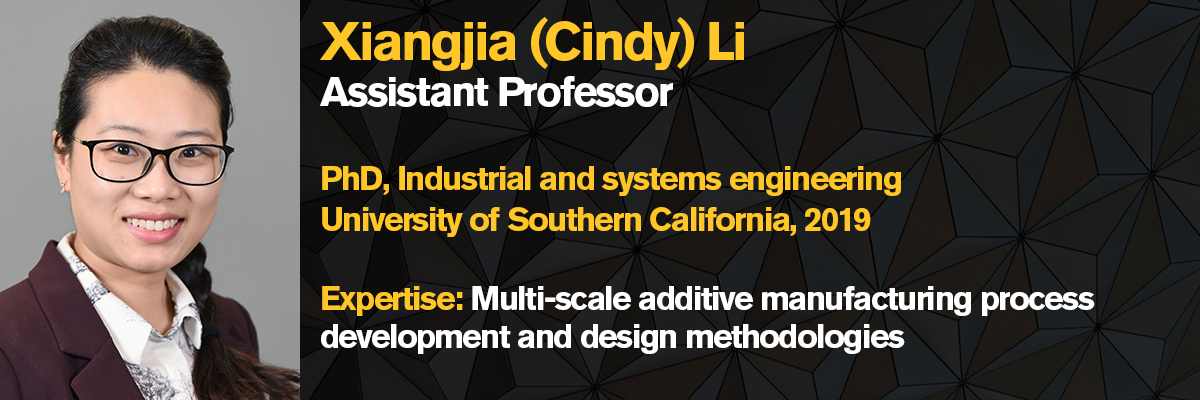
Xiangjia (Cindy) Li - Assistant Professor
Xiangjia (Cindy) Li has long been drawn to the problem-solving process inherent in engineering and has been able to apply that to her professional pursuits as a researcher and teacher.
“I dived into mechanical engineering, particularly the manufacturing area because the nature of making products functional in various applications has always been fascinating to me,” says Li.
Initially, she began doing research in the field “out of my curiosity about how to reliably replicate complex structures by developing material and manufacturing process. That is still one of my ongoing research topics.”
In Li’s specialty, additive manufacturing, a revolution has been taking place over the past 30 years.
“We have seen huge advances in producing complex products that are novel and sustainable,” says Li. “What keeps me curious is that we are also witnessing a paradigm shift of additive manufacturing from geometry-centered usage to function-focused applications.”
Her main research thrust this semester is to build high-performance functional medical devices by synthesizing functional requirements, bioinspired design methodologies and advanced manufacturing processes.
“What’s exciting is that in the past additive manufacturing processes were used mainly to build structural components from a wide variety of plastics, metals and rubber materials,” says Li. “Now we will move a step forward to work on the construction of functional synthetic devices based on interdisciplinary technologies and process innovations.”
Smart manufacturing is an important branch of industry 4.0 and plays an important role in new technological innovations and scientific discoveries.
“Especially in the area of smart manufacturing, engineering professors can play an essential role in converting one’s talents and personal characteristics into a lifetime interest, problem-solving know-how and creative innovations,” says Li.
She believes that having up-to-date engineering knowledge and learning the practical skills necessary in the manufacturing environment are key to the future success of students.
“As a teacher and researcher, I’m dedicated to bringing in state-of-art manufacturing technology to strengthen students’ knowledge base and to teach them the applicable skills necessary to vibrantly respond to the manufacturing industry’s many challenges.”
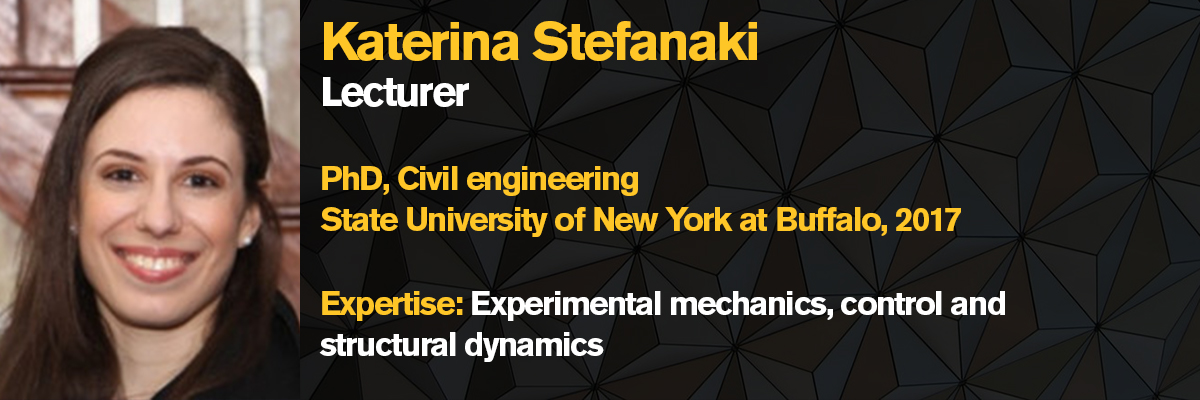
Katerina Stefanaki - Lecturer
Teaching engineering has been a major life goal for Katerina Stefanaki.
“In my view, the main mission of an educator is to help the students become independent thinkers and provide them with the necessary tools to become successful professionals in their field of study,” says Stefanaki.
Stefanaki plans to utilize active learning techniques as part of her lectures to help students grasp the class material.
“I believe that engineering students should be taught engineering principles but also learn how to apply these principles to solving real problems,” she says.
Learn more about the newest faculty in the Ira A. Fulton Schools of Engineering:
School of Biological and Health Systems Engineering
School of Computing, Informatics and Decision Systems Engineering
School of Electrical, Computer and Energy Engineering
School of Sustainable Engineering and the Built Environment
The Polytechnic School
Academic and Student Affairs



